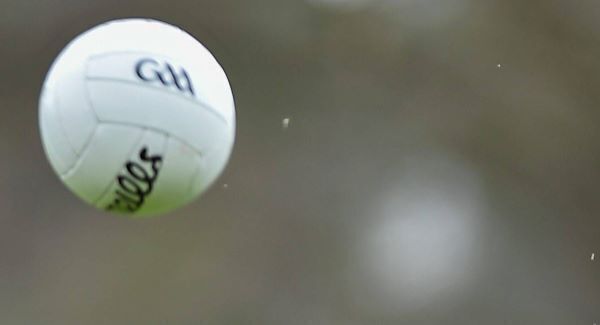Seán Kelly: How can we stop the inter-county lion from eating its club cubs?

Thirty-seven thousand feet above the United Kingdom as I flew towards Brussels last Monday morning, I read every word of all six pages in Examiner Sport about the departure of the history-making Dublin manager, Jim Gavin. I was happy for Jim, whom I often met on the same flight as he too winged his way to Brussels as part of his day job over the years. He has ended his spell at the helm of Dublin’s footballers, still at the very top of his game, and is undoubtedly one of the greatest managers that Gaelic Games has ever seen.
I moved through the always-excellent Monday supplement and on Page 12, my eyes were drawn to the heading: “Cash-strapped Cork conjuring ways of wooing back the fans”.
I had time to read this article twice before we landed. It made me sad because it painted a picture of what was happening on the ground, and it stood in stark contrast to the ecstasy, euphoria, and glamour of All-Ireland day and all the trappings that go with it, as seen in the pictures of Dublin’s great departing manager.
The top and the bottom of Gaelic Games are currently worlds apart, and this is because many of the problems that were been honestly and sincerely identified by Cork’s new CEO, Kevin O’Donovan, and reported in Tony Leen’s article, can be found in many if not all counties to some degree.
The major dilemma is club versus county, and how to manage the dynamic to ensure that that the 99% of players — those not playing for their counties — are catered for adequately by the Association they love. The GAA is all about playing games, and for any player, that necessitates a regular and predictable calendar right throughout the year, as the Club Players Association and others have been highlighting regularly.
With a growing emphasis on them, and the increased media coverage and sponsorship this brings, the All-Ireland Championships have grown in stature, but unfortunately, this has been to the detriment of the local club player and, not unnaturally, the coffers of the county boards.
No county, not even the biggest and best are in a position to take a drop in gate receipts to the tune of €200,000 in any year. If this trend continues, Cork and many other counties will simply go bust, through no fault of their own. The inter-county lion is eating its club cubs!
Now every single GAA officer and commentator says ad infinitum: “The club is the most important unit in the GAA”. This is true, but I can tell you one thing — although it is equally important, you never hear anyone say that “that county board is the most important structure in the GAA”. Unfortunately, the importance of our county boards is rarely reflected on. In fact, similarly to how they do with politicians, the populists instead like to criticise county boards. Always safer to demonise them than it is to praise them.
Nonetheless, a good county board is a prerequisite for a strong GAA presence within any county, and if a committee does not have the finance to cater for players, clubs, inter-county teams, schools, etc, then the GAA in that county goes downhill rapidly, as has been seen in the fall from grace of once-powerful GAA counties.
In my view, there is only one way for progress to be made, and I think Kevin O’Donovan hit the nail on the head when he said: “The Holy Grail for anyone with a love of Gaelic Games ... must be a concurrent season with club and county competitions progressing in parallel.”
The idea that an inter-county player plays little or no football with his club, through no fault of his own, has to end. Take David Clifford. This season he played one county league game for Fossa, played Junior County Championship in April, and then that was it for him at club level. Fossa were relegated, having lost the first five-county league games, three by a single point and the other two by just two points. It is reasonable to suggest that had David been on the field, they would have won all five and been promoted rather than relegated.
Of course, after the All-Ireland, David played a pivotal role for the divisional side, East Kerry, in their brilliant march to county championship success. He and his brother, Paudie, were the only Fossa players on the East Kerry team.
However, of course, none of this is David’s fault; he would love to play with his club. It is certainly not his father Dermot’s fault, as he is chairperson of the club, and neither can the blame be apportioned to county manager Peter Keane. It is all our faults for allowing this to happen over the years, and it is getting worse.

We have allowed the cult of the inter-county manager to develop, and at the same time put them under so much pressure to be successful that the first question asked of a manager if his team loses an important game is, ‘are you going to resign’? It has all come to this — too much pressure on managers, too much demanded of players, and too unfair on clubs. It is time to shout ‘stop’, and the Review Task Force has the opportunity to do it. In fairness to the Club Player’s Association, they have laid the groundwork, now it is time to bite the bullet.
What is happening now is not only unfair to clubs, but is downright immoral. The raison d’être of a club is to give all young players within its catchment the opportunity to play our games to their full potential. Then, when they do that expertly by producing players and developing them to an inter-county standard, they are virtually snatched away from them to serve the county, to the detriment of the club that nurtured them. This is not fair nor is it sustainable. It must be corrected and corrected quickly, and now is the time for the Fixtures Review Committee to grasp the nettle The only solution I can see is that inter-county players — all inter-county players — must be available to play for their clubs. We must have a “concurrent season” with club and county competitions progressing in parallel.
In fact, it happens in other sports. Professional soccer players have club competitions one week, international competitions the next, and then go back to their clubs the week after. Imagine if all the players in an international squad only played a handful of games for their clubs. It would not be tolerated for the obvious reasons — the club is paying their salary, but also fans would turn away too.
I’m not saying the inter-county provincial and All-Ireland Competitions should be downgraded — far from it! They are our shop window, our cash cow, which generate the finance that makes its way down to the grassroots.
This is not about a club versus county clash as it is always presented. I would rather talk about club and county. Because while it is true that 99% of players are club players only, it is probably also true to say that 99% of the GAA’s revenue is generated by intercounty competitions.
Therefore, the solution is to marry the two. Play club and county alternatively throughout the playing year and monitor it accordingly. A player not playing for his club should not be playing for his county. In fact, to go one further, we could even look at a system whereby inter-county players must have played a certain percentage of club games for which they were available in order to qualify for selection on the county panel.
If this system were to be applied in every county — and it would need to be — it would eliminate the huge frustration there is now with a club playing a Championship game in April and maybe playing the next round in September. This has not worked and it never will. More and more, club players will go abroad during the summer or give up altogether unless we establish a fairer system. Playing both club and county championships throughout the playing season, with clubs having a full squad, would transform the club scene and transform the GAA. It would also lead to increased revenue for county boards, as with clubs having their best 15 playing, the attendances would automatically improve.
There is one other related challenge the GAA should tackle, and I’ve never heard anyone raise it. I said above that 99% of the GAA’s revenue is generated by inter-county games. We wouldn’t want to dilute that, but a question to be posed is — how many of those who follow their county in the Championship ever go to a club game?
It might be an idea, therefore, to link Championship All-Ireland tickets with club championship matters.
If you buy a ticket for an All Ireland Championship match, this ticket should also entitle you to attend a Club Championship match in your county without an additional charge, with a proportion of the All-Ireland Championship ticket going to the county board. It might work, and if only a proportion of the fans who follow county teams could be encouraged to go to club games, they might well get ‘the bug’ and become regulars.
Every problem is a solution in waiting if people have the will and the foresight.

















